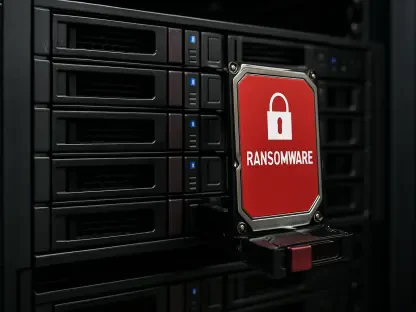The concept of Secure Access Service Edge (SASE) presents a transformative approach in the landscape of cybersecurity, offering a multifaceted solution that integrates pre-existing products and services into a unified, easy-to-deploy system. Emerging initially as a term coined by two Gartner analysts in 2019, SASE quickly moved from skepticism to widespread recognition among vendors and companies actively seeking ways to enhance network security. Leveraging the network edge—a location outside the traditional data center—SASE aims to provide a secure, flexible, and efficient option for businesses looking to streamline their cybersecurity measures in an increasingly complex digital era.
Fundamentally, Secure Access Service Edge represents an all-in-one, cloud-native solution, designed to simplify the management and deployment of cybersecurity while providing robust protection across varied environments. The distinctive advantage of SASE lies in its approach to consolidate various crucial security services into a single cohesive framework. This combination turns what might have once been seen as disparate and isolated security measures into an integrated, scalable defense mechanism. By harmoniously blending components such as SD-WAN, Secure Web Gateway, Cloud Access Security Broker, Next-Generation Firewall, and Zero Trust Network Access, SASE provides a practical and effective method to safeguard business operations against evolving cyber threats.
The Core Components of SASE
A typical Secure Access Service Edge solution is built around several core components that collectively fortify network security and provide seamless management capabilities. The Software-Defined Wide Area Network (SD-WAN) is often considered the backbone of SASE. This component revolutionizes traffic routing by using vetted technology providers such as Amazon Web Services or Microsoft Azure, thus replacing the conventional models reliant on routers and data centers. There’s a significant reduction in costs and latency, enhancing both security and efficiency. SD-WAN functions much like a medieval drawbridge, selectively allowing trusted entities to access the network while keeping potential threats at bay.
Another cornerstone of SASE is the Secure Web Gateway (SWG). Acting as a vigilant gatekeeper, SWG ensures that all web traffic complies with stringent company security policies while blocking any malicious content. This component is an essential line of defense, akin to a guard verifying passcodes before granting entry to protect sensitive information. The SWG’s capability to filter and monitor web traffic provides a crucial safeguard against cyber threats that may come through internet interactions, making it indispensable in a comprehensive security strategy.
Further enhancing SASE’s capabilities is the Cloud Access Security Broker (CASB). CASB is instrumental in managing critical security protocols, including single sign-on, user authentication, and token management. By doing so, it ensures that organizational leadership remains well-informed about the network’s defense status. Much like squires updating a king, the CASB provides continuous insights and updates, facilitating informed decisions about security postures and addressing potential vulnerabilities proactively. With the increasing reliance on cloud services, CASB’s role in overseeing and safeguarding cloud interactions has become more critical than ever.
Advanced Security Measures in SASE
SASE does not stop at essential components; it also incorporates advanced security measures to ensure a comprehensive defense against sophisticated cyber threats. Next-Generation Firewall (NGFW) and Firewall as a Service (FWaaS) play pivotal roles in these measures. These firewalls employ advanced techniques such as packet filtering and VPN identification to scrutinize incoming traffic meticulously. Acting much like the battlements of a castle, NGFW and FWaaS identify and neutralize potential threats before they can infiltrate the network. Their advanced filtering capabilities are essential in an era where cyber threats are increasingly complex and varied.
Zero Trust Network Access (ZTNA) is another crucial element within the SASE framework, offering a modern approach to network security. Unlike traditional Virtual Private Networks (VPNs), which provide broad access across the network, ZTNA limits access strictly to single applications. This method can be likened to the secret passageways within a castle, permitting discreet and secure movement without exposing the entire network. By adopting a zero-trust approach, this component significantly reduces the risk of internal threats and lateral movement by bad actors, which is critical in safeguarding sensitive data and applications.
One of the defining features of SASE is its cloud-native architecture, which integrates these advanced security measures seamlessly within a unified platform. This integration offers enhanced security while providing operational efficiency, minimizing the need for multiple disparate security products. The unified platform not only simplifies deployment and management but also improves scalability. As businesses grow and evolve, the scalable nature of SASE ensures that their security frameworks can expand and adapt without extensive overhauls, making it a future-proof solution in many respects.
Benefits of Adopting SASE
Adopting a SASE solution offers a wealth of benefits that can help businesses streamline their network security strategies while enhancing overall efficiency. One of the most significant advantages is the shift from traditional, data center-focused models to more adaptable, less constrained, and more cost-effective resources. In the fast-paced business environment of today, where even milliseconds can impact operations, SASE’s reduced latency is a game-changer. The efficiency not only boosts performance but also allows for significant cost savings in infrastructure, making it a fiscally sound choice for many organizations.
Enhanced scalability is another core benefit of SASE, especially relevant for businesses that operate within remote work environments or have dynamic user bases. The ability to quickly add users, workflows, and products without enduring extensive operational delays or exorbitant costs underscores the flexibility SASE offers. This scalability is crucial for businesses that need to maintain competitive agility, ensuring that they can adapt swiftly to new market demands or operational requirements without compromising security.
Moreover, the unified structure of SASE solutions simplifies network traffic monitoring, offering more accessible and efficient means to detect and resolve issues. Traditional security frameworks often necessitate convoluted processes to monitor and manage traffic, which can be both time-consuming and prone to errors. In contrast, the consolidated approach of SASE streamlines these activities, providing a more intuitive and manageable overview of network health. The ease of monitoring allows IT teams to focus on proactive measures rather than being bogged down with fragmented security tasks.
Challenges in Implementing SASE
Despite its numerous benefits, implementing a SASE solution is not without its challenges. As a technology that was officially defined just five years ago, SASE is still relatively new and in a developmental phase. This novelty can lead to growing pains, including potential doubts about its efficacy and challenges regarding its implementation within existing IT frameworks. The complexity of the SASE concept, combining multiple security components into one cohesive solution, can become bewildering for IT departments unaccustomed to such all-encompassing approaches. This may result in implementation chaos and require significant training and adjustment periods for staff.
Another considerable challenge lies in integrating SASE with older, legacy systems. Many existing IT infrastructures are not designed with modern, cloud-native network security in mind, making integration a potentially difficult task. These legacy systems can pose compatibility issues, necessitating thoughtful and often costly modifications to ensure seamless operation with SASE components. For small and medium-sized businesses, the cost of implementing SASE, alongside the associated interoperability issues, might be prohibitive. It becomes crucial for such businesses to discern which elements of SASE will bring the most value and which may be excessive or unnecessary in their specific context.
Additionally, there are concerns about potential misalignments between a SASE framework and an organization’s existing IT staffing strategies. SASE necessitates a convergence of networking and security roles, which can be a daunting transition for teams that traditionally operated in siloed functions. Ensuring that staff can adapt to this new unified approach requires meticulous planning and often substantial investment in training. This staffing misalignment can initially hamper productivity and efficiency, which is counterintuitive to the intended benefits of a SASE implementation.
Evaluating SASE for Your Business
Secure Access Service Edge (SASE) introduces a revolutionary approach in cybersecurity, bringing together various pre-existing products and services into a unified, easy-to-deploy system. The term was first coined by Gartner analysts in 2019 and quickly gained traction among vendors and businesses seeking to bolster their network security. By leveraging the network edge—different from the traditional data center—SASE provides a secure, flexible, and efficient way for businesses to streamline their cybersecurity measures in an increasingly complex digital landscape.
In essence, SASE is an all-in-one, cloud-native solution designed to simplify the management and deployment of cybersecurity while offering robust protection across varied environments. Its key advantage lies in consolidating multiple essential security services into a single, cohesive framework. This makes disparate security measures integrated and scalable. Combining elements like SD-WAN, Secure Web Gateway, Cloud Access Security Broker, Next-Generation Firewall, and Zero Trust Network Access, SASE offers an effective method to protect business operations against the ever-evolving cyber threats.









